Federico Larroca
Learning to Optimally Dispatch Power: Performance on a Nation-Wide Real-World Dataset
May 30, 2025Abstract:The Optimal Reactive Power Dispatch (ORPD) problem plays a crucial role in power system operations, ensuring voltage stability and minimizing power losses. Recent advances in machine learning, particularly within the ``learning to optimize'' framework, have enabled fast and efficient approximations of ORPD solutions, typically by training models on precomputed optimization results. While these approaches have demonstrated promising performance on synthetic datasets, their effectiveness under real-world grid conditions remains largely unexplored. This paper makes two key contributions. First, we introduce a publicly available power system dataset that includes both the structural characteristics of Uruguay's electrical grid and nearly two years of real-world operational data, encompassing actual demand and generation profiles. Given Uruguay's high penetration of renewable energy, the ORPD problem has become the primary optimization challenge in its power network. Second, we assess the impact of real-world data on learning-based ORPD solutions, revealing a significant increase in prediction errors when transitioning from synthetic to actual demand and generation inputs. Our results highlight the limitations of existing models in learning under the complex statistical properties of real grid conditions and emphasize the need for more expressive architectures. By providing this dataset, we aim to facilitate further research into robust learning-based optimization techniques for power system management.
Weighted Random Dot Product Graphs
May 07, 2025



Abstract:Modeling of intricate relational patterns has become a cornerstone of contemporary statistical research and related data science fields. Networks, represented as graphs, offer a natural framework for this analysis. This paper extends the Random Dot Product Graph (RDPG) model to accommodate weighted graphs, markedly broadening the model's scope to scenarios where edges exhibit heterogeneous weight distributions. We propose a nonparametric weighted (W)RDPG model that assigns a sequence of latent positions to each node. Inner products of these nodal vectors specify the moments of their incident edge weights' distribution via moment-generating functions. In this way, and unlike prior art, the WRDPG can discriminate between weight distributions that share the same mean but differ in other higher-order moments. We derive statistical guarantees for an estimator of the nodal's latent positions adapted from the workhorse adjacency spectral embedding, establishing its consistency and asymptotic normality. We also contribute a generative framework that enables sampling of graphs that adhere to a (prescribed or data-fitted) WRDPG, facilitating, e.g., the analysis and testing of observed graph metrics using judicious reference distributions. The paper is organized to formalize the model's definition, the estimation (or nodal embedding) process and its guarantees, as well as the methodologies for generating weighted graphs, all complemented by illustrative and reproducible examples showcasing the WRDPG's effectiveness in various network analytic applications.
Graph Contrastive Learning for Connectome Classification
Feb 07, 2025Abstract:With recent advancements in non-invasive techniques for measuring brain activity, such as magnetic resonance imaging (MRI), the study of structural and functional brain networks through graph signal processing (GSP) has gained notable prominence. GSP stands as a key tool in unraveling the interplay between the brain's function and structure, enabling the analysis of graphs defined by the connections between regions of interest -- referred to as connectomes in this context. Our work represents a further step in this direction by exploring supervised contrastive learning methods within the realm of graph representation learning. The main objective of this approach is to generate subject-level (i.e., graph-level) vector representations that bring together subjects sharing the same label while separating those with different labels. These connectome embeddings are derived from a graph neural network Encoder-Decoder architecture, which jointly considers structural and functional connectivity. By leveraging data augmentation techniques, the proposed framework achieves state-of-the-art performance in a gender classification task using Human Connectome Project data. More broadly, our connectome-centric methodological advances support the promising prospect of using GSP to discover more about brain function, with potential impact to understanding heterogeneity in the neurodegeneration for precision medicine and diagnosis.
LASE: Learned Adjacency Spectral Embeddings
Dec 23, 2024Abstract:We put forth a principled design of a neural architecture to learn nodal Adjacency Spectral Embeddings (ASE) from graph inputs. By bringing to bear the gradient descent (GD) method and leveraging the principle of algorithm unrolling, we truncate and re-interpret each GD iteration as a layer in a graph neural network (GNN) that is trained to approximate the ASE. Accordingly, we call the resulting embeddings and our parametric model Learned ASE (LASE), which is interpretable, parameter efficient, robust to inputs with unobserved edges, and offers controllable complexity during inference. LASE layers combine Graph Convolutional Network (GCN) and fully-connected Graph Attention Network (GAT) modules, which is intuitively pleasing since GCN-based local aggregations alone are insufficient to express the sought graph eigenvectors. We propose several refinements to the unrolled LASE architecture (such as sparse attention in the GAT module and decoupled layerwise parameters) that offer favorable approximation error versus computation tradeoffs; even outperforming heavily-optimized eigendecomposition routines from scientific computing libraries. Because LASE is a differentiable function with respect to its parameters as well as its graph input, we can seamlessly integrate it as a trainable module within a larger (semi-)supervised graph representation learning pipeline. The resulting end-to-end system effectively learns ``discriminative ASEs'' that exhibit competitive performance in supervised link prediction and node classification tasks, outperforming a GNN even when the latter is endowed with open loop, meaning task-agnostic, precomputed spectral positional encodings.
Deep-TEMPEST: Using Deep Learning to Eavesdrop on HDMI from its Unintended Electromagnetic Emanations
Jul 12, 2024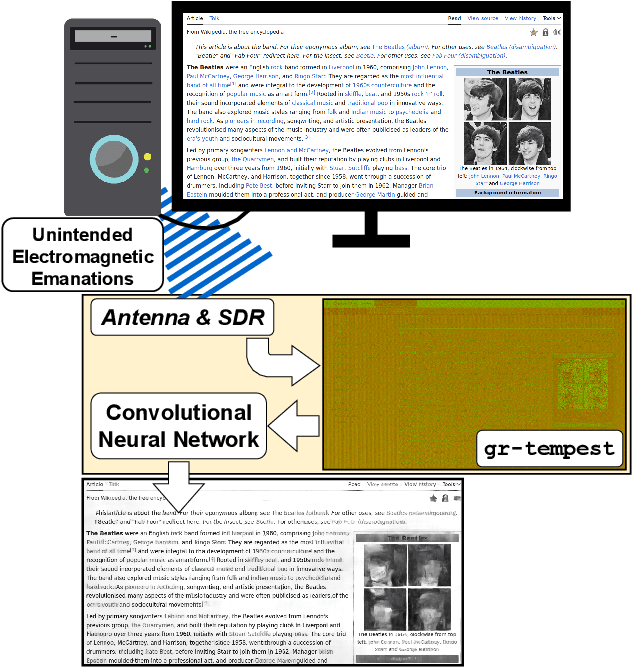
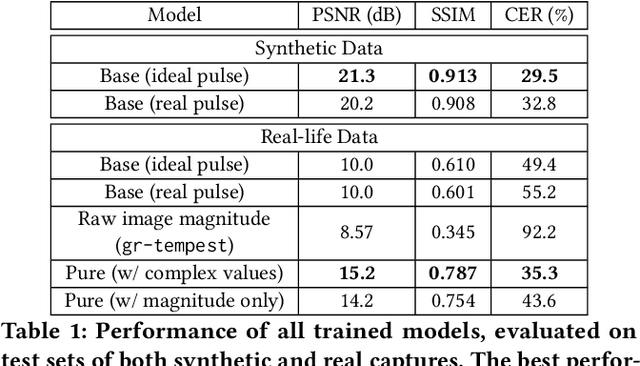
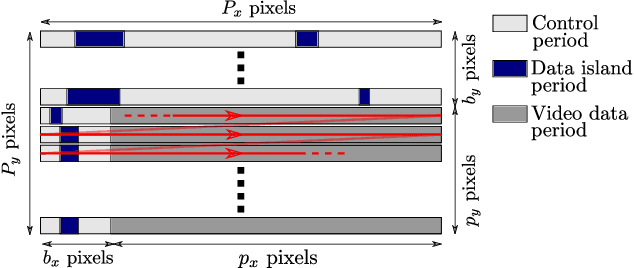
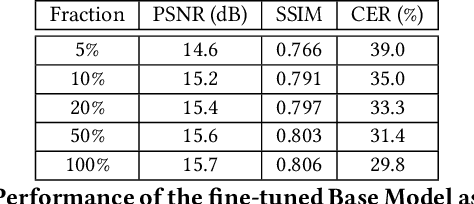
Abstract:In this work, we address the problem of eavesdropping on digital video displays by analyzing the electromagnetic waves that unintentionally emanate from the cables and connectors, particularly HDMI. This problem is known as TEMPEST. Compared to the analog case (VGA), the digital case is harder due to a 10-bit encoding that results in a much larger bandwidth and non-linear mapping between the observed signal and the pixel's intensity. As a result, eavesdropping systems designed for the analog case obtain unclear and difficult-to-read images when applied to digital video. The proposed solution is to recast the problem as an inverse problem and train a deep learning module to map the observed electromagnetic signal back to the displayed image. However, this approach still requires a detailed mathematical analysis of the signal, firstly to determine the frequency at which to tune but also to produce training samples without actually needing a real TEMPEST setup. This saves time and avoids the need to obtain these samples, especially if several configurations are being considered. Our focus is on improving the average Character Error Rate in text, and our system improves this rate by over 60 percentage points compared to previous available implementations. The proposed system is based on widely available Software Defined Radio and is fully open-source, seamlessly integrated into the popular GNU Radio framework. We also share the dataset we generated for training, which comprises both simulated and over 1000 real captures. Finally, we discuss some countermeasures to minimize the potential risk of being eavesdropped by systems designed based on similar principles.
Gradient-Based Spectral Embeddings of Random Dot Product Graphs
Jul 25, 2023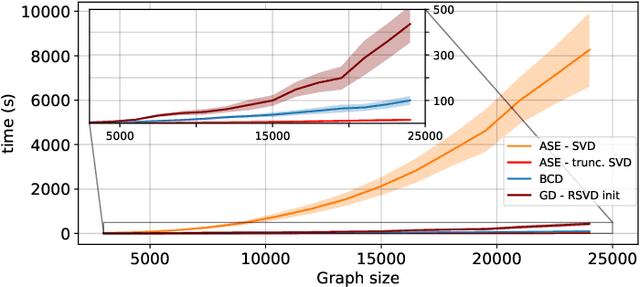



Abstract:The Random Dot Product Graph (RDPG) is a generative model for relational data, where nodes are represented via latent vectors in low-dimensional Euclidean space. RDPGs crucially postulate that edge formation probabilities are given by the dot product of the corresponding latent positions. Accordingly, the embedding task of estimating these vectors from an observed graph is typically posed as a low-rank matrix factorization problem. The workhorse Adjacency Spectral Embedding (ASE) enjoys solid statistical properties, but it is formally solving a surrogate problem and can be computationally intensive. In this paper, we bring to bear recent advances in non-convex optimization and demonstrate their impact to RDPG inference. We advocate first-order gradient descent methods to better solve the embedding problem, and to organically accommodate broader network embedding applications of practical relevance. Notably, we argue that RDPG embeddings of directed graphs loose interpretability unless the factor matrices are constrained to have orthogonal columns. We thus develop a novel feasible optimization method in the resulting manifold. The effectiveness of the graph representation learning framework is demonstrated on reproducible experiments with both synthetic and real network data. Our open-source algorithm implementations are scalable, and unlike the ASE they are robust to missing edge data and can track slowly-varying latent positions from streaming graphs.
Online Change Point Detection for Weighted and Directed Random Dot Product Graphs
Jan 26, 2022
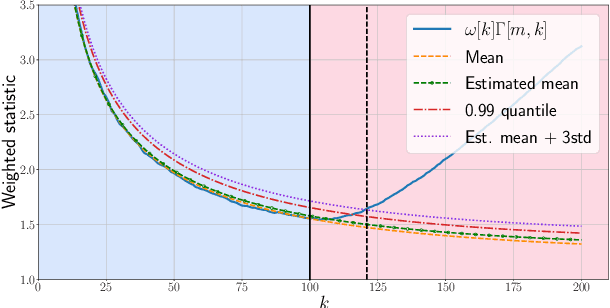
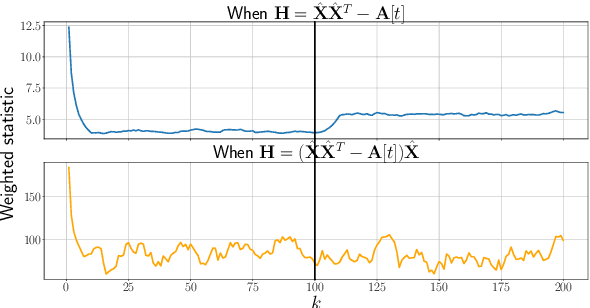
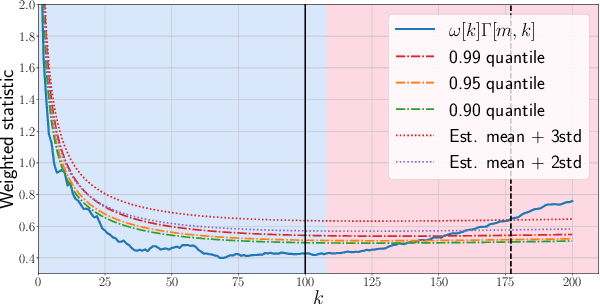
Abstract:Given a sequence of random (directed and weighted) graphs, we address the problem of online monitoring and detection of changes in the underlying data distribution. Our idea is to endow sequential change-point detection (CPD) techniques with a graph representation learning substrate based on the versatile Random Dot Product Graph (RDPG) model. We consider efficient, online updates of a judicious monitoring function, which quantifies the discrepancy between the streaming graph observations and the nominal RDPG. This reference distribution is inferred via spectral embeddings of the first few graphs in the sequence. We characterize the distribution of this running statistic to select thresholds that guarantee error-rate control, and under simplifying approximations we offer insights on the algorithm's detection resolution and delay. The end result is a lightweight online CPD algorithm, that is also explainable by virtue of the well-appreciated interpretability of RDPG embeddings. This is in stark contrast with most existing graph CPD approaches, which either rely on extensive computation, or they store and process the entire observed time series. An apparent limitation of the RDPG model is its suitability for undirected and unweighted graphs only, a gap we aim to close here to broaden the scope of the CPD framework. Unlike previous proposals, our non-parametric RDPG model for weighted graphs does not require a priori specification of the weights' distribution to perform inference and estimation. This network modeling contribution is of independent interest beyond CPD. We offer an open-source implementation of the novel online CPD algorithm for weighted and direct graphs, whose effectiveness and efficiency are demonstrated via (reproducible) synthetic and real network data experiments.
Museum Accessibility Through Wi-Fi Indoor Positioning
Aug 26, 2020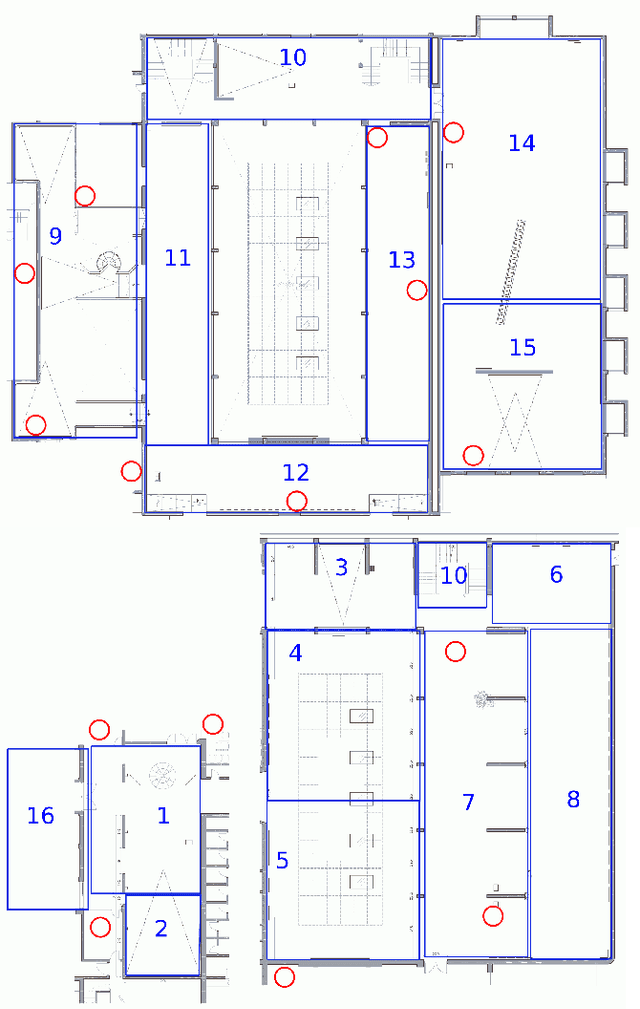
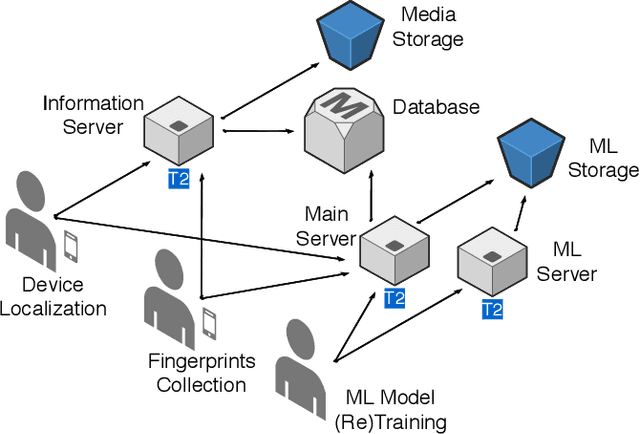
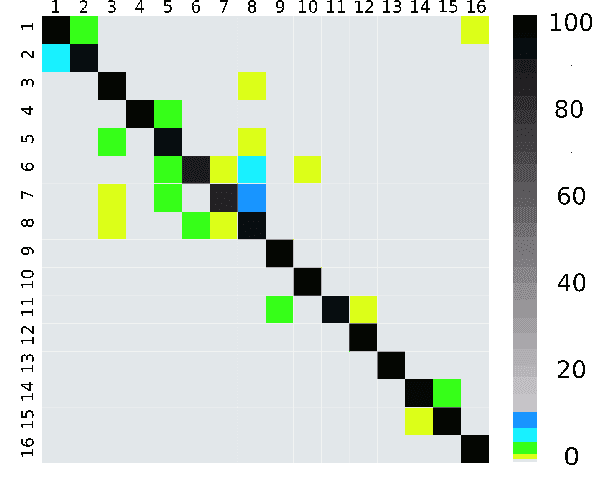

Abstract:Accessibility has long been a primary concern for major museums around the world. This is no exception for the Museo Nacional de Artes Visuales (MNAV, National Museum of Visual Arts) in Uruguay. Having a special interest in achieving accessibility for visually impaired visitors, the MNAV sought to implement a new system to allow these visitors a seamless tour around a new exhibit. We present here the system we developed and the lessons we learned from its deployment and usage. In particular, we used Wi-Fi indoor positioning techniques, so that visually impaired visitors could hear relevant audios through an Android app from their own smartphones based on their location inside the museum. The system was further adapted and used to assist the general public during their visits, allowing access to texts, audios and images according to their position. We furthermore share the complete source code and the dataset used to train the system.
 Add to Chrome
Add to Chrome Add to Firefox
Add to Firefox Add to Edge
Add to Edge